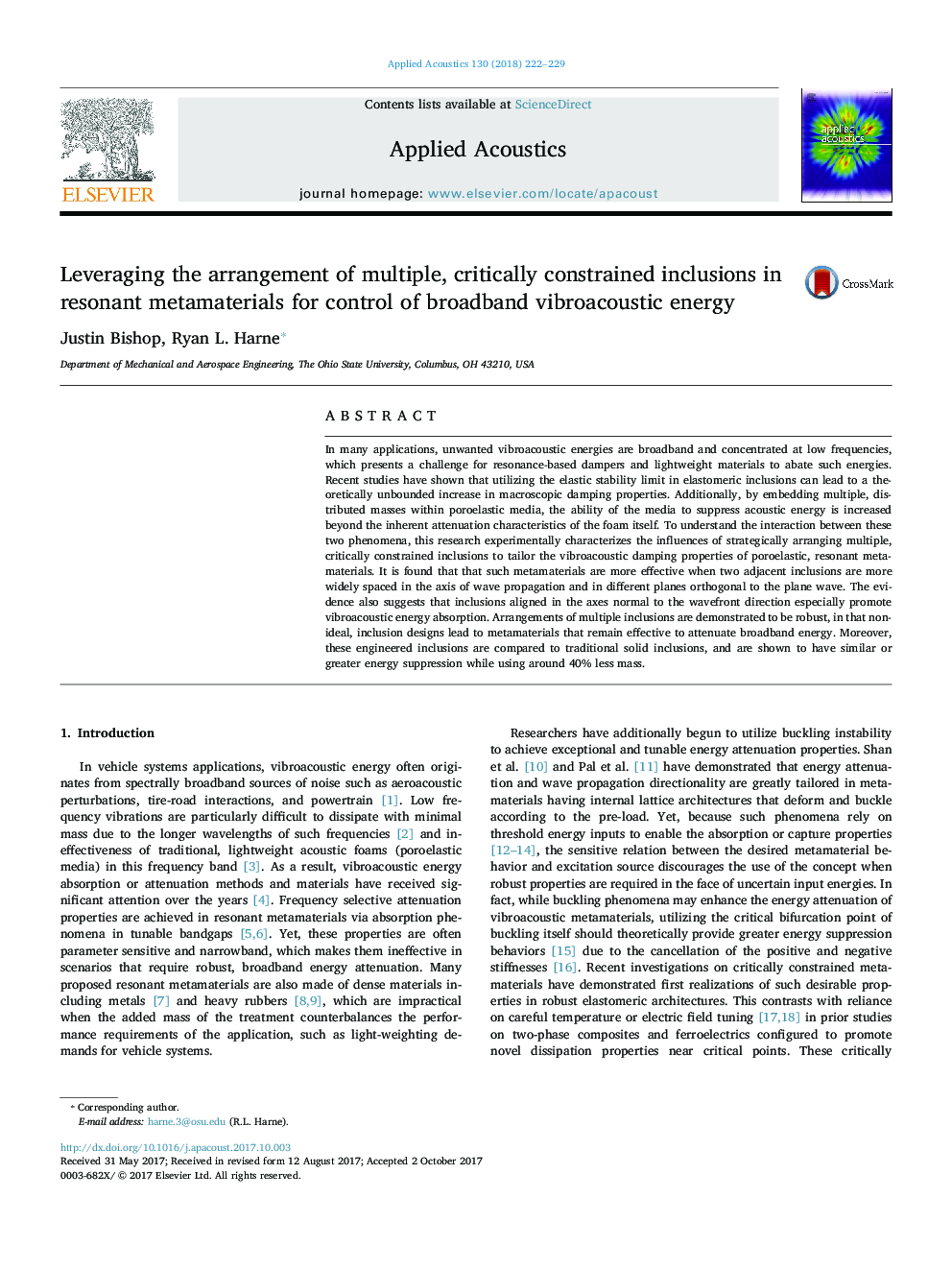| Article ID | Journal | Published Year | Pages | File Type |
|---|---|---|---|---|
| 5010710 | Applied Acoustics | 2018 | 8 Pages |
Abstract
In many applications, unwanted vibroacoustic energies are broadband and concentrated at low frequencies, which presents a challenge for resonance-based dampers and lightweight materials to abate such energies. Recent studies have shown that utilizing the elastic stability limit in elastomeric inclusions can lead to a theoretically unbounded increase in macroscopic damping properties. Additionally, by embedding multiple, distributed masses within poroelastic media, the ability of the media to suppress acoustic energy is increased beyond the inherent attenuation characteristics of the foam itself. To understand the interaction between these two phenomena, this research experimentally characterizes the influences of strategically arranging multiple, critically constrained inclusions to tailor the vibroacoustic damping properties of poroelastic, resonant metamaterials. It is found that that such metamaterials are more effective when two adjacent inclusions are more widely spaced in the axis of wave propagation and in different planes orthogonal to the plane wave. The evidence also suggests that inclusions aligned in the axes normal to the wavefront direction especially promote vibroacoustic energy absorption. Arrangements of multiple inclusions are demonstrated to be robust, in that non-ideal, inclusion designs lead to metamaterials that remain effective to attenuate broadband energy. Moreover, these engineered inclusions are compared to traditional solid inclusions, and are shown to have similar or greater energy suppression while using around 40% less mass.
Related Topics
Physical Sciences and Engineering
Engineering
Mechanical Engineering
Authors
Justin Bishop, Ryan L. Harne,
